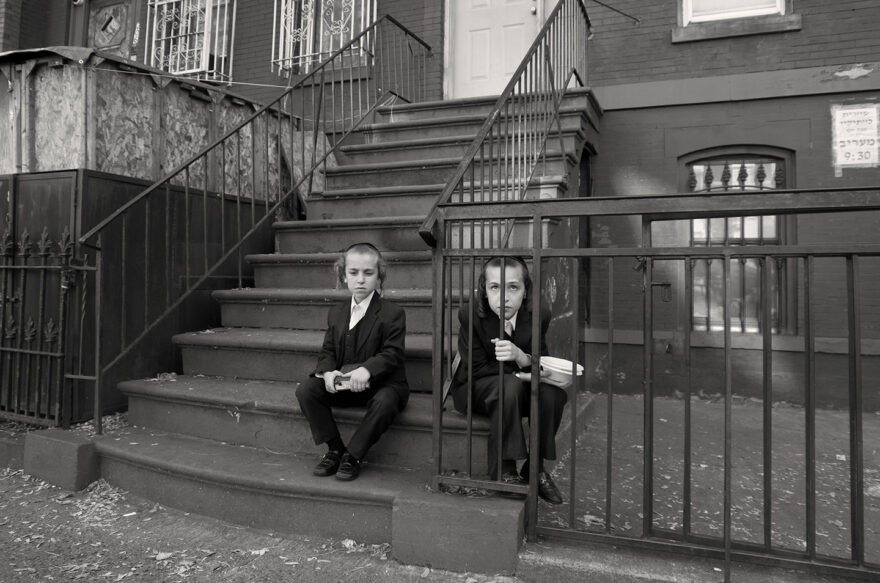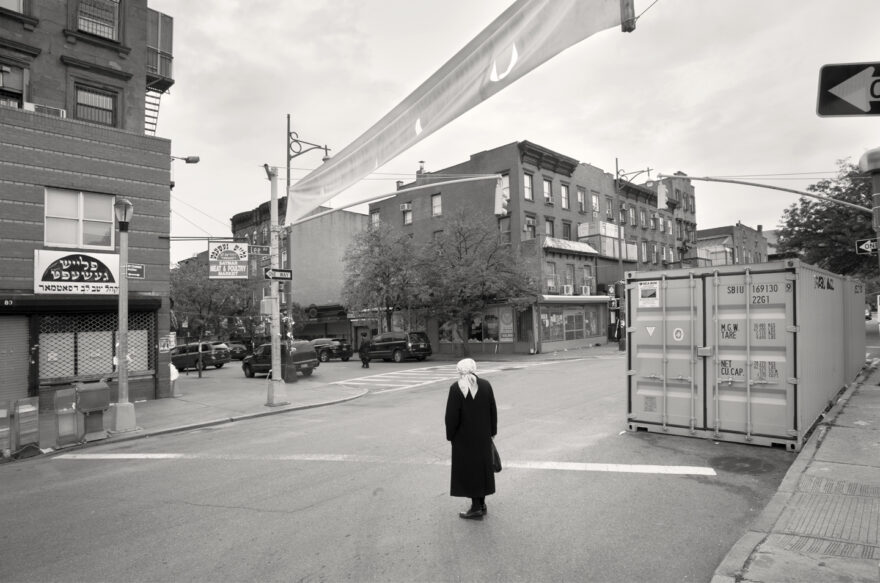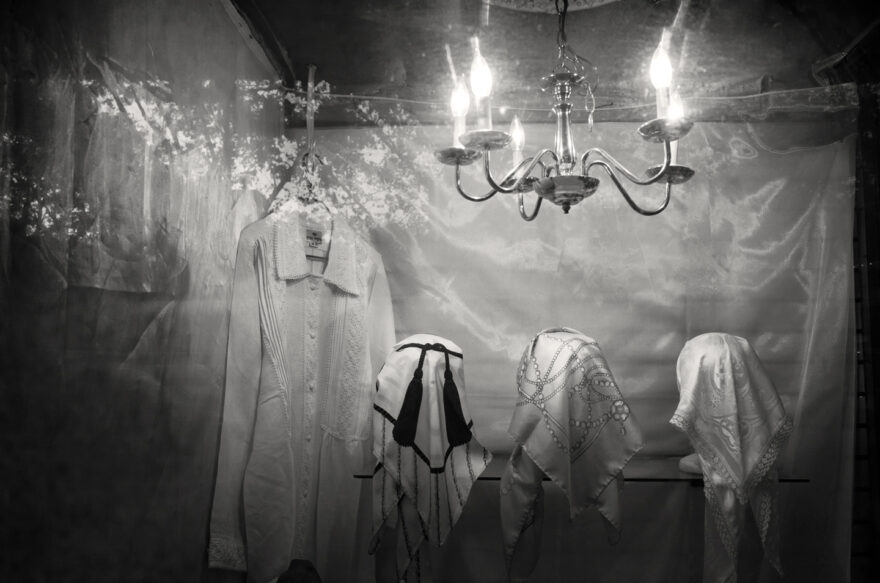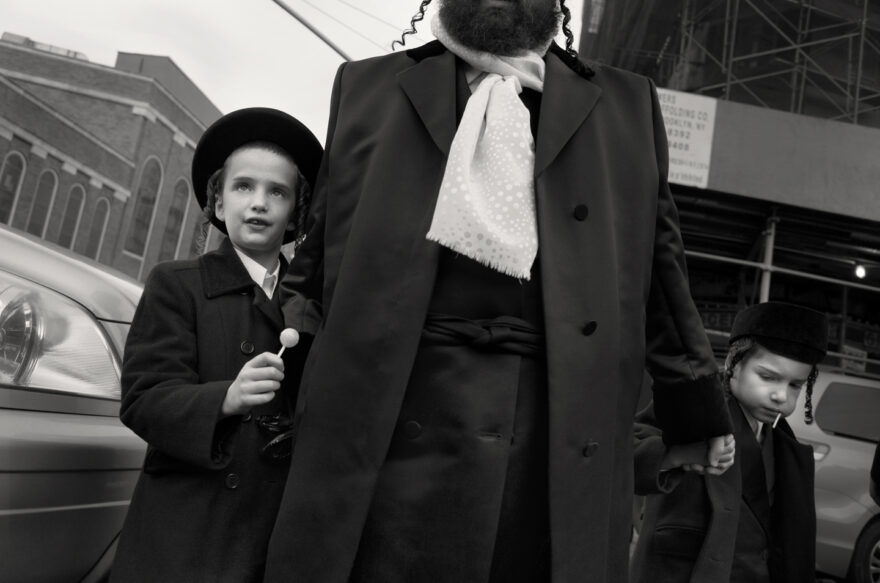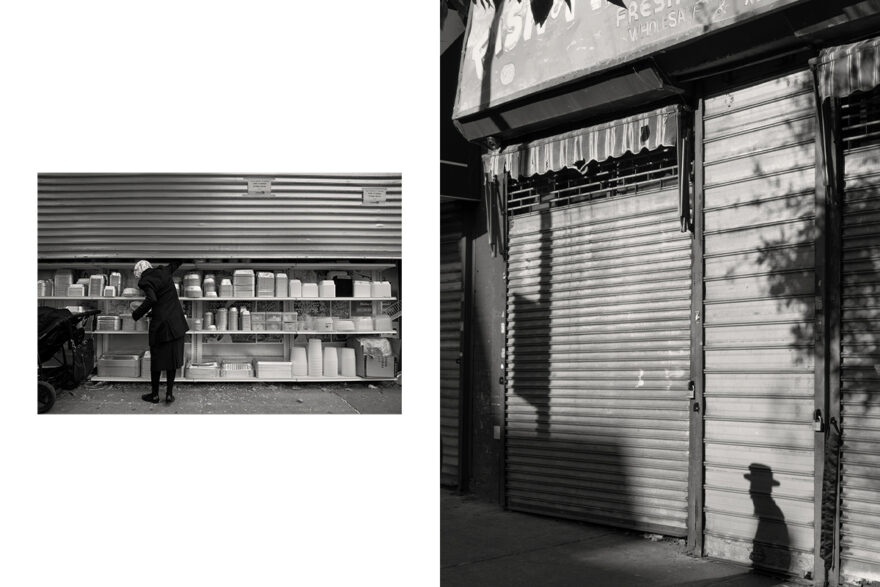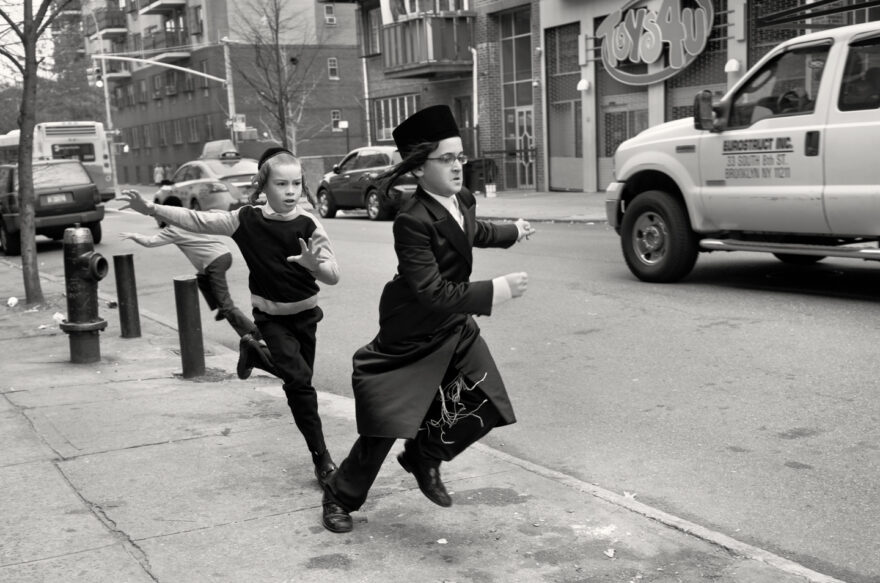It is a truism to state that photography is about vision. Or to say that photography has shaped how we see. These are accepted habits of thought, but sometimes these obvious truths are forgotten because they are so evident. Reminding ourselves to look at photographs as a view and a point of view through what John Szarkowski once described as “the photographer’s eye” is a sometimes necessary corrective to our semi-conscious experience of the photographic imagery that surrounds us.
William Castellana is an award-winning photographer known for his exquisitely composed photographic still-lifes. His photographs of South Williamsburg — begun in part as an experiment in photographing people and inspired by the traditions of street photography — release him from the studio and photography as a controlled and meticulously-planned process. In contrast to the work of the photographic studio, street photography depends on quick reflexes and an ability to intuit a photograph before it clicks into place. The most successful street photographers construct an image that we cannot see without photography — a moment in time and out of time. The pleasure of looking at these images resides in this clarity of vision — a nearly impossible quality of stillness in the midst of chaos that creates a fully-formed moment out of formlessness. Shot in black-and-white with a Ricoh Gr digital camera, Castellana’s photographs of South Williamsburg and the people who live there remain true to the esthetic of twentieth-century street photography. They are tightly packed moments of absolute clarity, and they contain surprising juxtapositions. Composed on the street by the frame of the camera’s field of view, the images are not altered beyond the traditional dodging and burning techniques used in a wet darkroom.
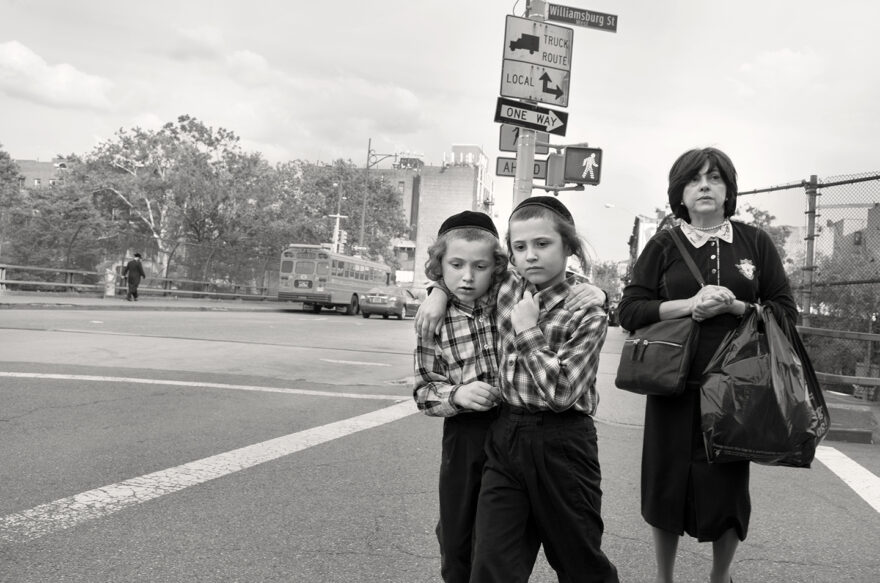
The photographer lives in the same neighborhood that is his subjects inhabit, so his relationship to it is both complicated and personal. Like Winogrand and Levitt who had their favorite neighborhoods, Castellana revisits the same blocks in South Williamsburg. On one level, the photographs form a portrait of familiar spaces. On another, they carry forward into the twenty-first century the kind of street photography that dominated American photography in the middle years of the twentieth century. The South Williamsburg that is captured by Castellana’s camera is a social and seemingly self-sufficient neighborhood of mothers and strollers, packs of children, and men whose infrequent place in these photographs suggest their engagements beyond the neighborhood. Home to a large settlement of observant Jews of several distinct persuasions, South Williamsburg follows a different rhythm than many other American localities — one that gives primacy to religious faith and long-held customs. While both subject and the technique are contemporary — these are digital photographs of life in Brooklyn shot between November of 2013 and December of 2014 — the black-and-white images suggest a more distant time and place. As the photographs attest, hairstyles are different, fashions are different, the very sociability of the sidewalk crowded with large families of children is different from other contemporary American neighborhoods. The distance between one culture and another (or in Brooklyn, between one neighborhood and another) is sometimes apparent in the frank appraisals of the children whose eyes make contact with the camera, or those who stare curiously at the photographer; in these photographs, the distance is marked on both sides — the child looking curiously at the stranger with the camera, the photographer looking at the child in the street. The interest that we all have in looking at each other is embedded in the taking of these photographs and in our desire to look now.
In some of Castellana’s photographs, strange juxtapositions occur. In one, an older man, expansive in his vigorous claim to the sidewalk, talks on a cellphone—a jarring reminder that he, though dressed in a manner reminiscent of 1940 — is in South Williamsburg in 2014. Swarms of children activate sidewalks, holding hands, reading, waiting patiently for their mothers who converse on street corners. Purim is celebrated on the street in costumes and make-up and family visits from block to block. Travel by foot, car, and tricycle are subjects for the photographer. So are shopping, street watching, and neighborly gossip.
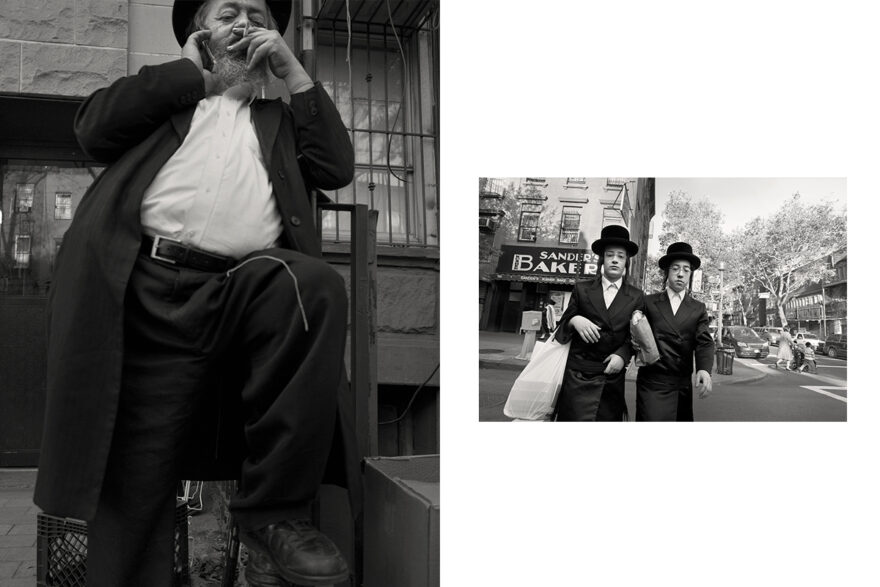
The beauty of many of these photographs is concentrated in the rich blacks, the beautifully modulated grayscale, and the precise articulation of pattern ranging from fur hats to cloth coats, silken scarves, to trees and shadows, brick, billboards and signs, and even painted murals on buses. There are also a few photographs where the geometry of city streets — the abstract lines of horizontal sidewalks with vertical architecture is skewed so everyone and everything leans to the right, or left, and the grid of the city is unmoored. These off-kilter views of the city energize and activate seeing by disrupting habits of perception forcing a more dynamic relationship between photograph and viewer.
Photography’s ability to transform life into still moments that breathe of life is apparent in these images. The photographer’s skill in making pictures, framing moments, and in clarifying vision enables us to see more through his photographs of South Williamsburg than would be possible in a physical stroll through the neighborhood. Castellana’s photographs of South Williamsburg do not simply reveal the character of a time and place (in fact, they reveal how complicated simple understandings of time and place are), but also show tenderness, joy, and community both present and hidden from sight.
